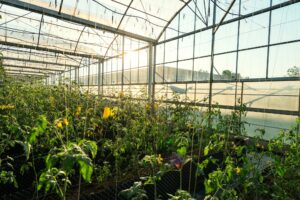Innovative Irrigation Solutions for Modern Agriculture
Water. The lifeblood of our planet, and a critical element for thriving agriculture. But with a growing population and a changing climate, ensuring efficient water use in farming has become a pressing challenge. Traditional flood irrigation methods, while simple, waste a significant amount of water through evaporation and runoff. This is where innovative irrigation solutions step in, offering modern agriculture a much-needed drip of hope.
The Need for Innovation: A Parched Landscape
The numbers paint a stark picture. Agriculture accounts for around 70% of global freshwater withdrawals [1]. With climate change leading to more erratic rainfall patterns and droughts, this reliance on a finite resource is unsustainable. Additionally, water scarcity threatens food security, impacting crop yields and livelihoods.
This is where innovation thrives. Modern irrigation solutions are revolutionizing how we deliver water to crops, promoting:
- Water Efficiency: By targeting water delivery directly to plant roots, innovative systems minimize evaporation and runoff, significantly reducing water consumption.
- Precision Farming: Sensors and automation allow for real-time monitoring of soil moisture, weather conditions, and crop needs. This data-driven approach ensures optimal water application, maximizing yield and minimizing waste.
- Sustainability: Reduced water use translates to lower energy consumption for pumping and treatment. This not only benefits the environment but also improves farm profitability.
A Drip Revolution: Pioneering Technologies
Let’s explore some of the innovative irrigation solutions leading the charge:
- Drip Irrigation: This champion of water conservation delivers water slowly and directly to the root zone through a network of pipes and emitters. Drip irrigation can save up to 50% of water compared to traditional methods, making it a popular choice for a variety of crops.
- Subsurface Drip Irrigation (SDI): Taking precision a step further, SDI places emitters directly below the soil surface, minimizing evaporation losses even further. This method is particularly beneficial for high-value crops like vegetables and fruits.
- Micro-Sprinkler Irrigation: Ideal for crops with larger foliage, micro-sprinklers deliver small water droplets that reach the root zone effectively. This method offers greater coverage than drip irrigation while maintaining efficient water use.
Beyond these established players, the irrigation scene is teeming with exciting advancements:
- Smart Irrigation Systems: Integrating sensors, controllers, and automation, these systems collect real-time data on soil moisture, weather, and plant health. They then adjust irrigation schedules automatically, ensuring optimal water delivery based on specific needs. This allows farmers to remotely monitor and manage their irrigation systems, saving time and resources.
- Soil Moisture Sensors: These innovative tools provide real-time data on soil moisture levels, allowing farmers to irrigate only when necessary. This eliminates guesswork and ensures crops receive the right amount of water for optimal growth.
- Weather Monitoring and Forecasting: By integrating weather data into irrigation systems, farmers can anticipate changes in precipitation and adjust their watering schedules accordingly. This proactive approach prevents water waste during periods of expected rainfall.
Beyond Efficiency: A Holistic Approach
While innovative irrigation solutions are a game-changer, a holistic approach is crucial for sustainable water management in agriculture. Here are some additional considerations:
- Crop Selection: Choosing drought-resistant crops or varieties that thrive in specific water conditions can significantly reduce irrigation needs.
- Mulching: Covering the soil surface with organic materials like straw or wood chips helps retain moisture and reduces evaporation.
- Field Leveling: Ensuring a level field promotes even water distribution and prevents runoff.
The Road Ahead: A Sustainable Future
Innovation in irrigation offers a beacon of hope for modern agriculture. By embracing these technologies and adopting sustainable practices, farmers can navigate the challenges of water scarcity and ensure a more secure future for our food systems. Here’s what we can expect:
- Continued advancements: Research and development in irrigation are ongoing, with new technologies likefertigation (injecting fertilizers with irrigation water) and the use of recycled water offering exciting possibilities.
- Increased adoption: As the benefits of innovative irrigation become more evident, and the cost of traditional methods rises due to increasing water scarcity, we can expect wider adoption across farms of all sizes.
- Policy and incentives: Governments and organizations can play a vital role by promoting sustainable irrigation practices through education, subsidies, and infrastructure development.
By working together, farmers, researchers, policymakers, and consumers can ensure a future where agriculture thrives, not at the expense of, but in harmony with, our precious water resources. Let’s embrace the drip revolution and usher in a new era of sustainable irrigation for a thriving and water-secure future.


